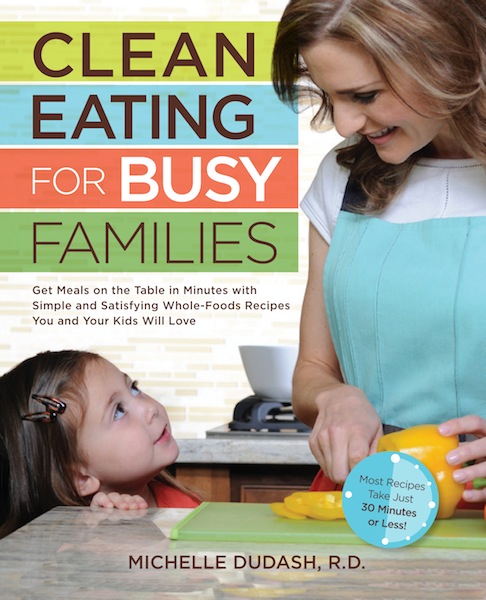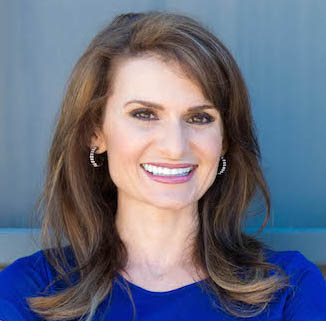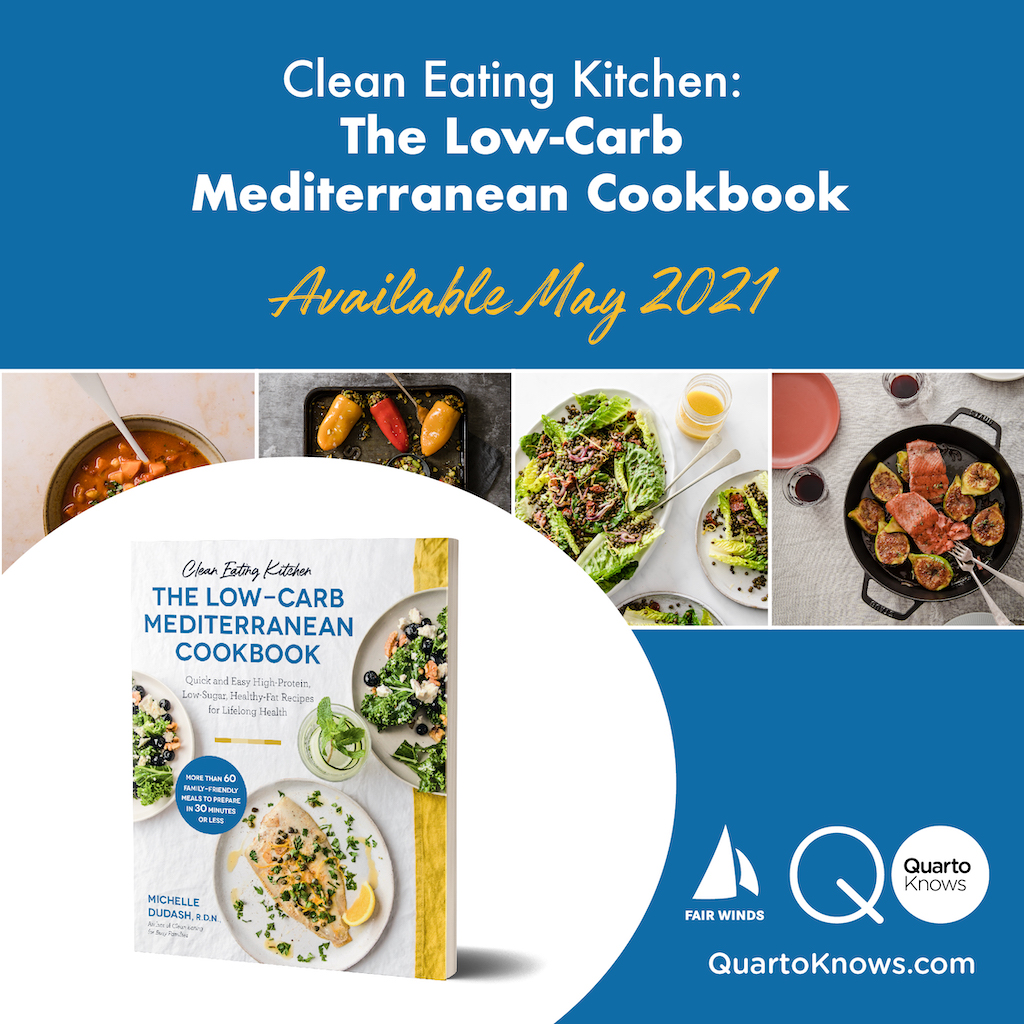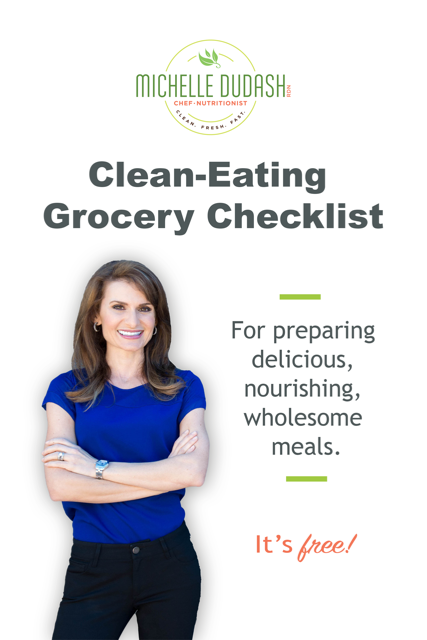Clean Eating Book Author as Guest of #RDchat Twitter Chat

Michelle Dudash, chef nutritionist and author of the new cookbook Clean Eating for Busy Families, weighed in as a guest contributor to the hot discussion of clean eating via the Twitter chat #RDchat. The chat was moderated by registered dietitian Janet Helm on December 12, 2012. Michelle and other registered dietitians discussed their own personal definitions of clean eating. Over the next few weeks, the entire chat will be broken into three shorter, separate articles, starting with this one.
What is your definition of clean eating?
Q1: What does the term #cleaneating mean to you? How can we best translate this lifestyle to the public, our audiences?
@michelledudash: Whole foods, minimally processed. From as close to home as possible. Sustainably produced. Real ingredients.
@NutritionBabes: Real food, minimally processed, sustainable if possible.
@NourRD: Minimal added ingredients (color, flavorings, sugar, etc), whole, fresh, also I think hydrating foods. @MenuDietitian: Farm-to-table needs to get more prevalent, too few farmers markets where I live – or not open enough when they are there.
@alexikscott: Limited processing and hormones. For me it also means fewer stomach problems.
@alissarumseyRD: Minimally “processed”, fruits/veggies/grains. RD’s need to help public learn to cook!
@VanPerrone: We must consider the food, but also the way it was produced & the miles travelled.
Q2: Do you think “clean” is not a consumer-friendly term? Does “whole foods” mean the same thing?
@JenniferNeily: Clean means more than whole foods.
@AlexOppRD: #Clean eating makes me think of fresher food like fruits and vegetables, they just feel good.
@bethwarrenrd:“Whole” is more consumer friendly than “clean”, but I’d rather it just be simple: eat REAL food.
@joyofnutrition: “Clean” isn’t consumer friendly. It suggests that all processed food is unhealthy. I agree with using “whole”
@michelledudash: Whole foods = clean foods for the most part. #cleaneating is still a new concept to many people.
@NourRD: Whole doesn’t always means clean. An apple is whole, but is a conventional apple clean?
@mollymorganrd: I get whole foods, not sure about consumers – does it mean eat a whole twinkie… J
@nutritionjill: To the public, clean eating means not eating “bad” foods like those with “bad” ingredients.
@michelledudash: While #cleaneating leans away from extreme processed foods, as long as the ingredients are clean, then it’s cleaner.
@JenniferNeily: Clean doesn’t have to be organic… conventionally grown food is ok.
@joyofnutrition: It can be misleading. We have to remember that we can process foods in our kitchen.
@chowandchatter: Using standard terms would be clearer for the public
@iwasborn2dothis: Too many people think eating clean means eating perfectly, but just moving in the right direction is so much better than nothing!


 I'm a chef nutritionist, not the food police. I eat cookies but make sure to eat my broccoli too.
I'm a chef nutritionist, not the food police. I eat cookies but make sure to eat my broccoli too.


1 Comment